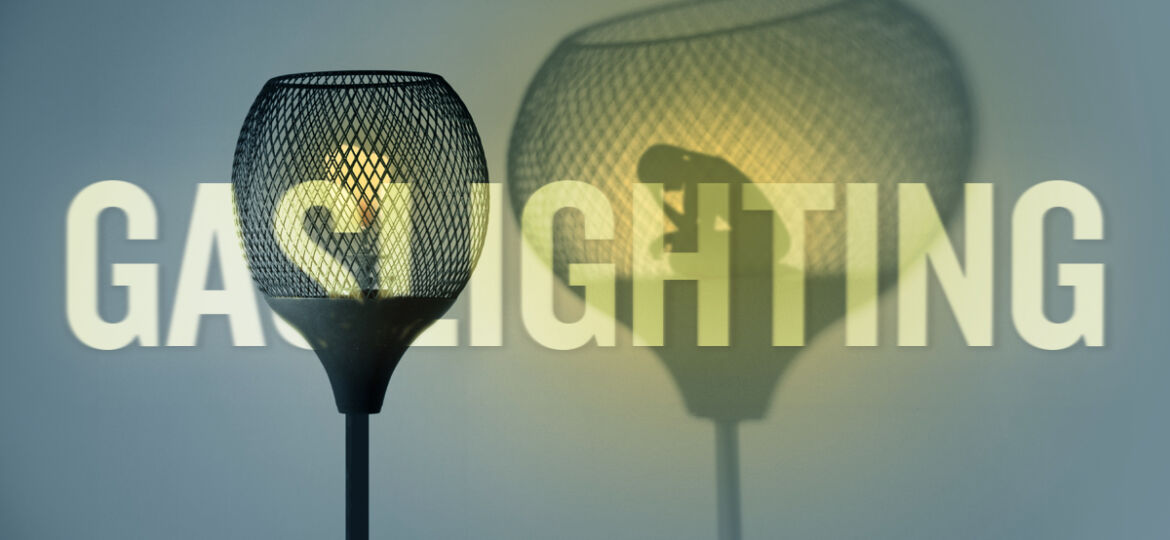Gaslighting – When Abusers Distort Reality
If you follow any kind of mental health news, you’ve heard the term: “Gaslighting.” A tool of mental manipulation, it’s seen in romantic relationships, the workplace, and anywhere where there is a power dynamic. But what is gaslighting and why is it one of the prized weapons in the sexual predator’s arsenal?
Where does the term come from?
The term gaslighting is from the 1944 George Cukor movie Gaslight, starring Ingrid Bergman. In it, Charles Boyer, who plays Bergman’s husband, slowly tries to drive his new wife mad by making her think she’s crazy—one of his tactics being the “unexplained dimming” of the gaslights in their home.
The term “gaslighting” came to define emotional abuse that causes the victim to question their own sanity, memory, feelings, instincts, and knowledge base. Abusers utilize gaslighting tactics to skew victims’ sense of reality, which causes them to doubt their own intuition and increases the power the abuser has over them.
“Gaslighting is a slow unconscious loss of reality.” – Tracy Malone
What are the signs of gaslighting?
According to the National Domestic Abuse Hotline and Healthyplace.com, gaslighting often takes the following forms:
Outright Lying
Stating blatant untruths in an accusatory manner. This may also look like the abuser denying things they have said, done, or promised.
Examples:
- “I never assaulted you.”
- “She’s making it up.”
- “I never went to that bar.”
- “I’ve never even met that child.”
- “I know what you did.”
- “She loved it.”
Withholding
Refusing to listen or pretending to not understand the victim, even when their meaning is clear.
Examples:
- “Your account is really confusing.”
- “I don’t even think you know what you are talking about.”
- “I know what you did and I’m waiting for you to tell me the truth.”
- “Wow, I truly have no clue how you could even say these things.”
Countering
Questioning the memory or experiences of the victim, even though the victim is correct (and the abuser knows this).
Examples:
- “Are you sure it even happened?”
- “Are you sure you didn’t like it a little bit?”
- “I was just trying to help you.”
- “No, I think you’re mistaken (about the assault).”
- “We both know what really happened. I don’t know why you would lie”.
Blocking or Diverting
Changing the conversation from subject matter to questioning the motives of the victim to take back control.
Examples:
- “You just want to hurt me because you’re jealous.”
- “How could you say things like that?”
- “Why do you always play the victim?”
- “You should be ashamed.”
- “After everything I did for you, this is how you act?”
Trivializing
Minimizing or refusing to acknowledge the feelings, thoughts, or experiences of the victim. This may also look like shaming or embarrassing the victim for their normal, valid, human emotions.
Examples:
- “You need to lighten up.”
- “You know I was just joking around.”
- “You don’t even know what real abuse is.”
- “You are way too sensitive.”
- “You don’t even have a degree, you’re far from an expert.”
The goal? Make the victim question their memory of the facts, their emotions, and eventually, their sanity. When someone is unable to trust their own perceptions, it gives their abuser much greater levels of control as the abuser is now able to define “reality” for the victim.
People who use gaslighting tactics are everywhere: at work, families, and relationships. But a certain type of person has gaslighting down to a science – the sexual predator.
How does a sexual predator use gaslighting?
Gaslighting is a tremendous tool for predators. Why? It’s effective—gaslighting ensures that victims:
- Question whether or not they were actually sexually assaulted.
- Are too scared or confused to report.
- Blame themselves for the abuse.
- Isolate themselves from others due to fear of not being “correct”.
How to deal with a gaslighter at work or in a relationship
The tough truth about an abuser who uses gaslighting is that the abuser, most likely, will never change the behavior. Once the victim understands that dynamic, they understand that the best way to deal with a gaslighter is to avoid that person altogether.
If the person is a work colleague or family member, sometimes avoidance is impossible. According to Healthline, there are some things victims can do to protect themselves. The most important of these are taking space when possible, self-care, and getting help. In the workplace, keeping a log of the behavior and reporting can also be helpful.
Sometimes, simple distance, even for a short period of time, can help the victim recenter and regain perspective on the abuser’s behavior. However, it’s important to note that taking space from an abuser, or outright ending the relationship, can be an extremely dangerous time for the victim. There are many resources that will support a victim during this time in order to prioritize safety. Talking to a therapist can also help the victim isolate the gaslighting behaviors and counter them effectively.
If you, or someone you know, are experiencing abuse or gaslighting, below are some resources to consider reaching out to for support and guidance.
- RAINN (Rape, Abuse & Incest National Network):656.HOPE or visit their website.
- National Domestic Violence Hotline: 800.799.SAFE, text “START” to 88788, or visit their website.


